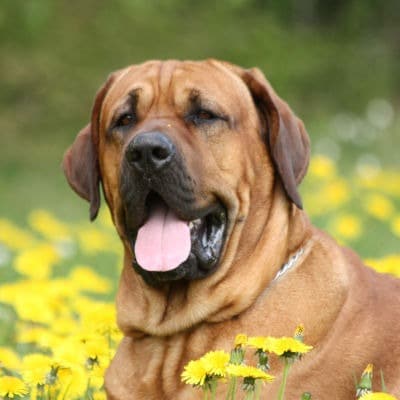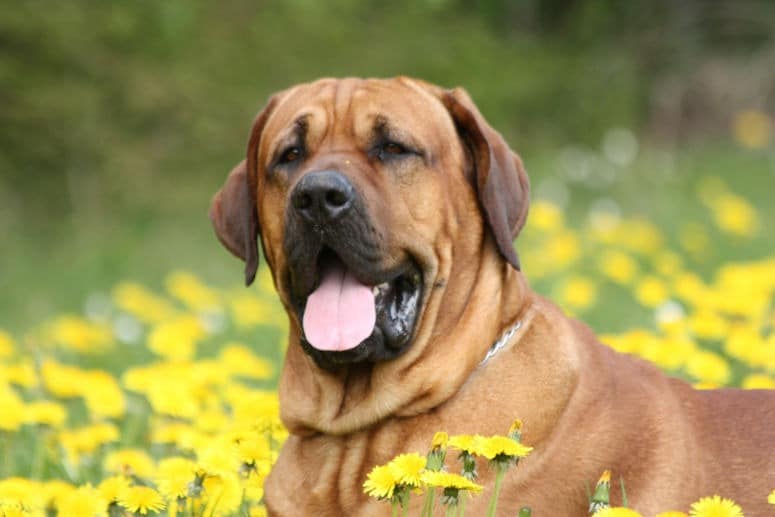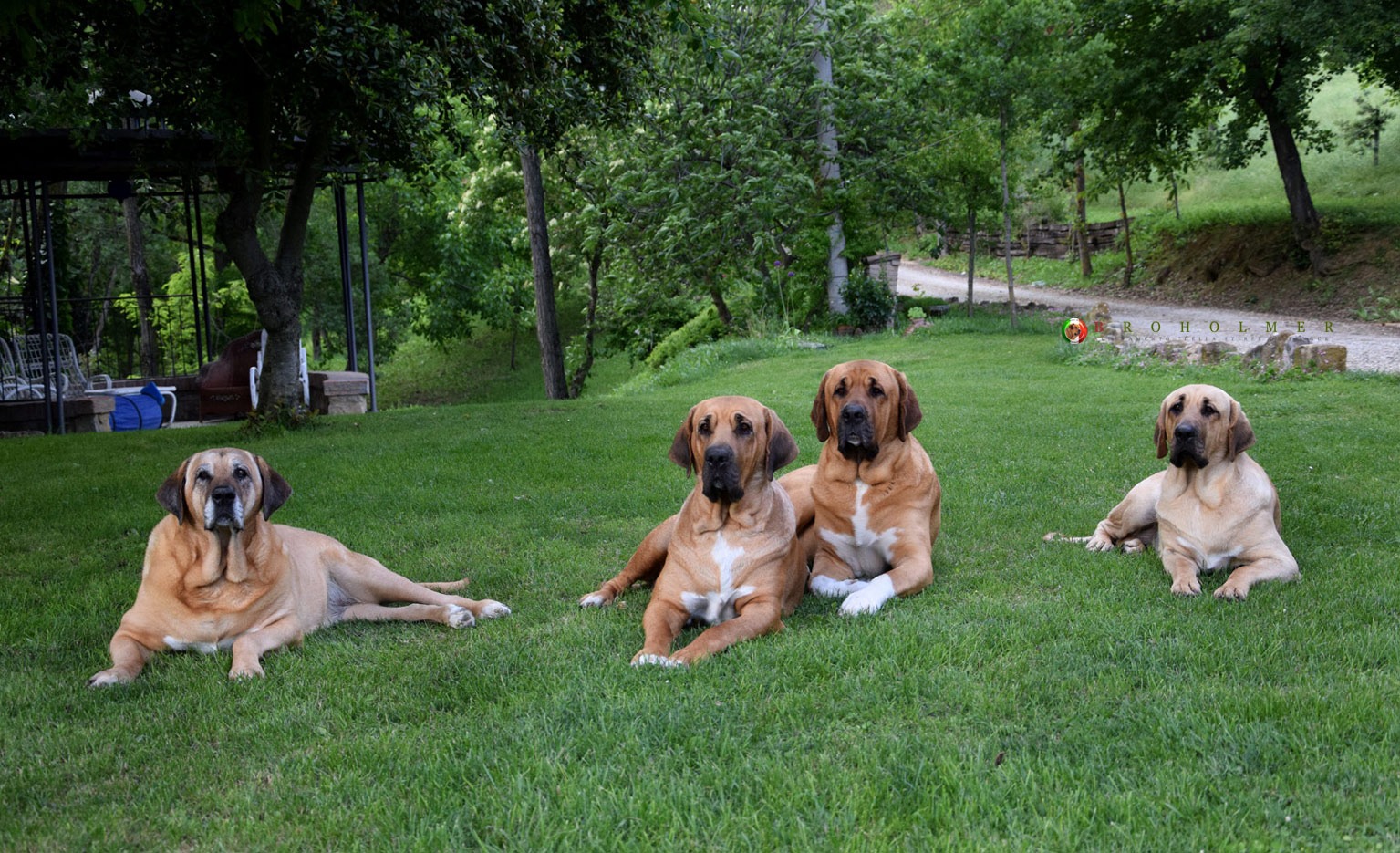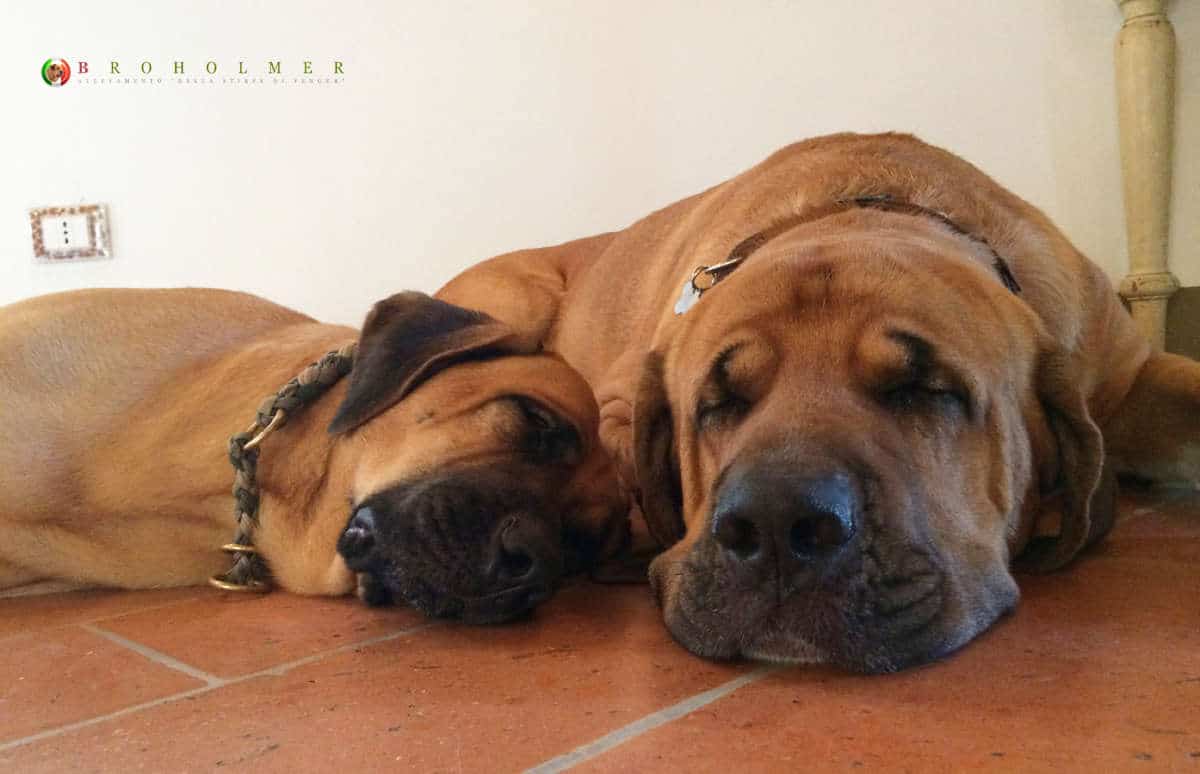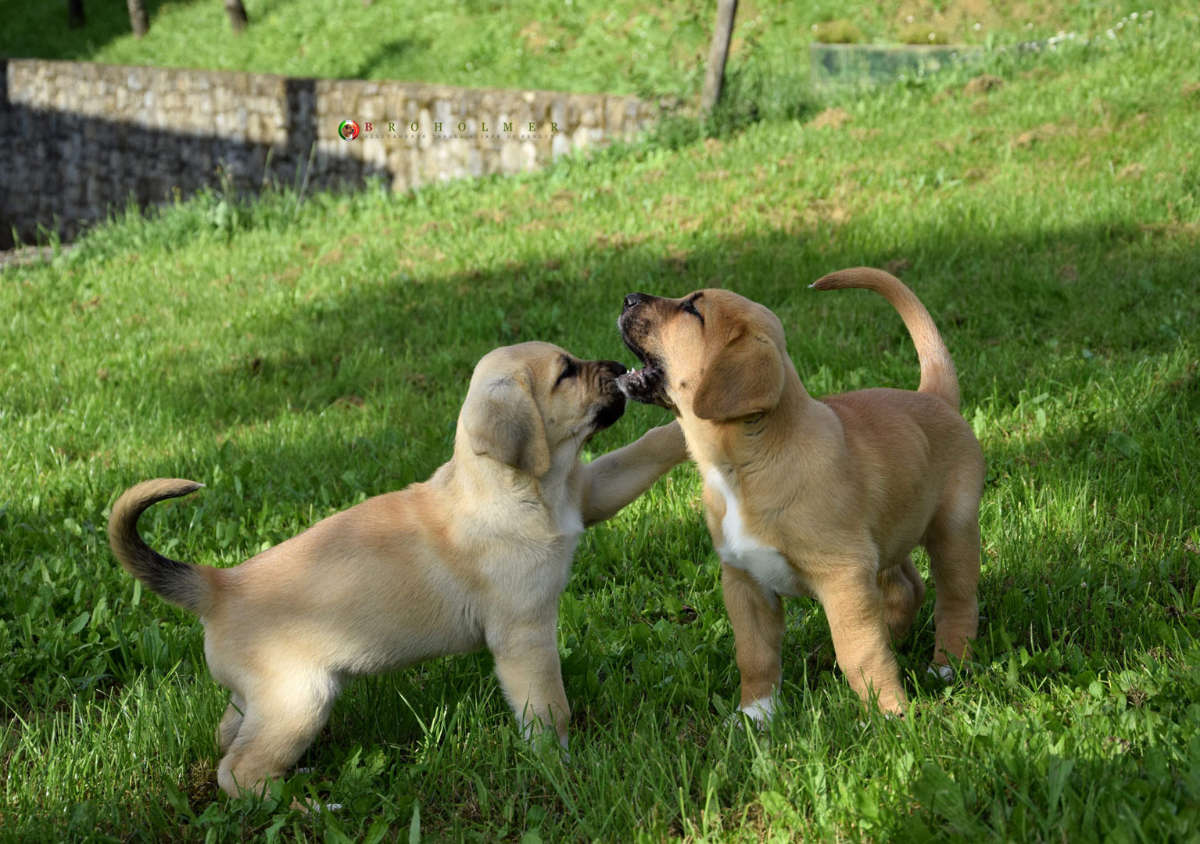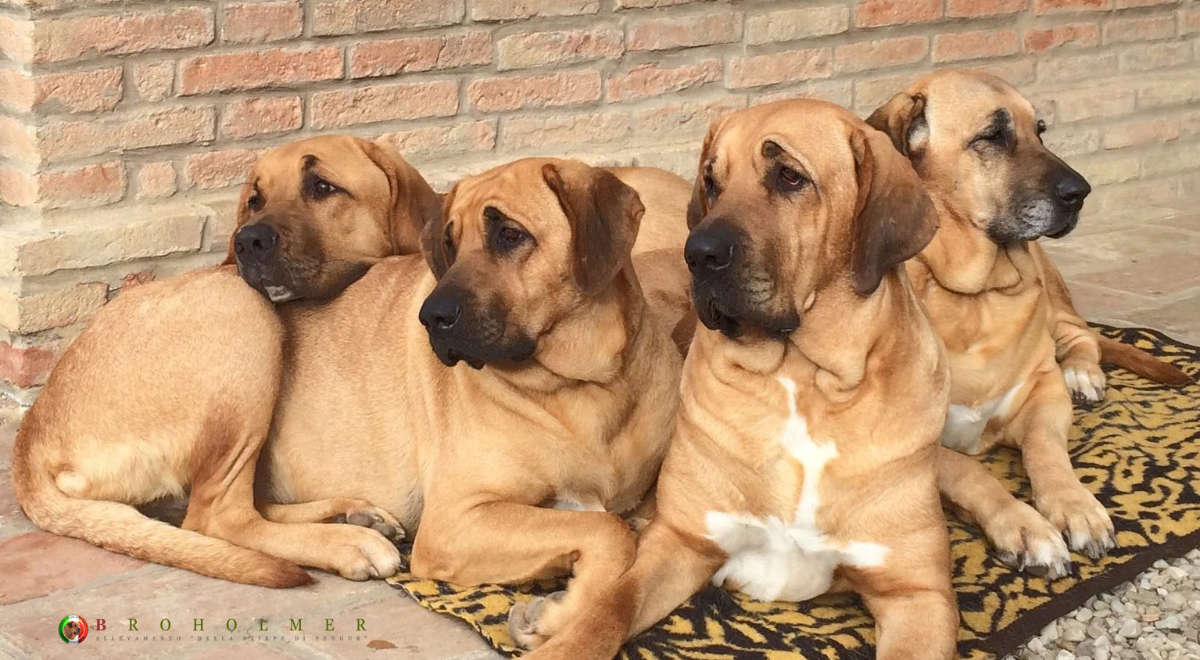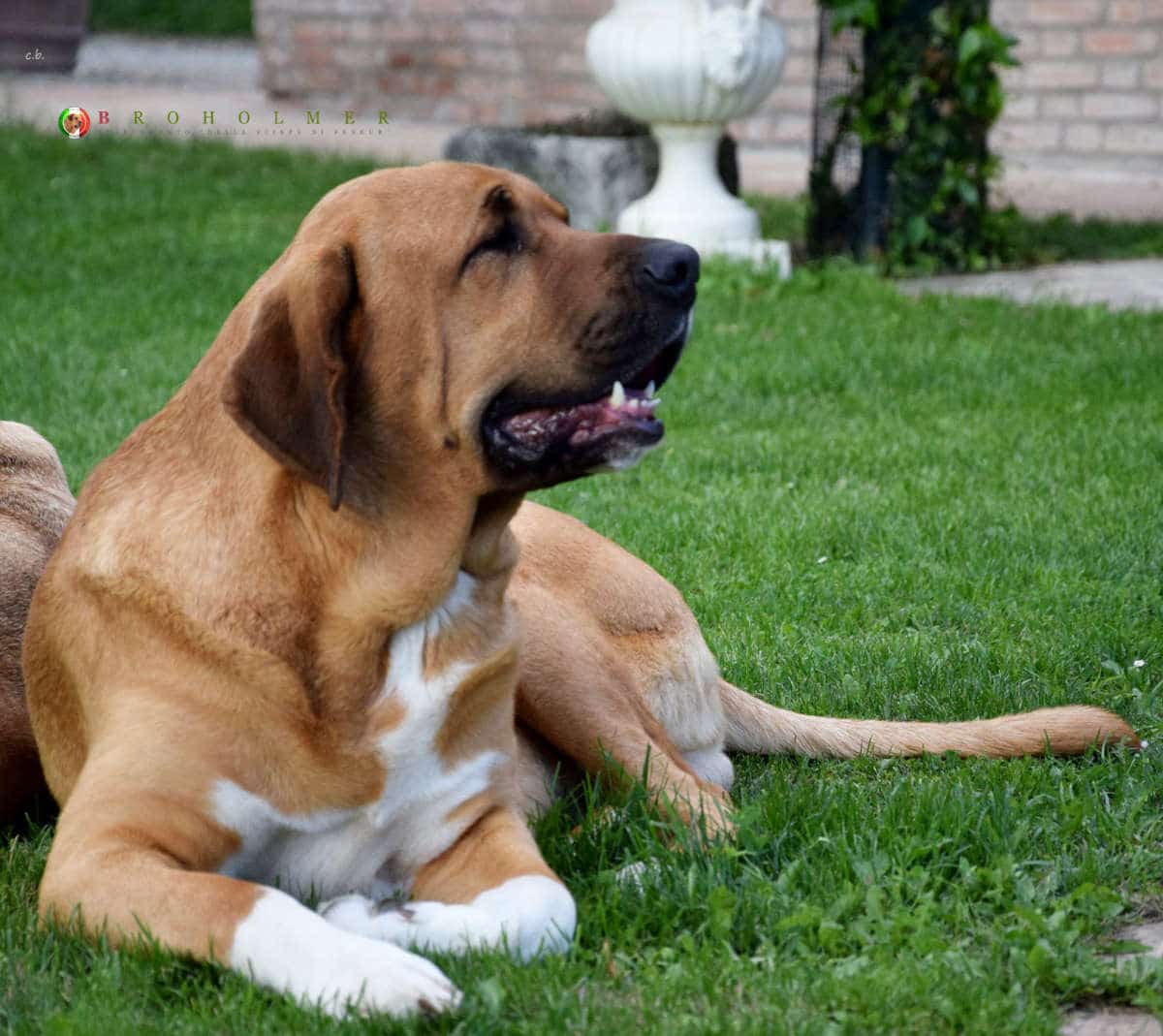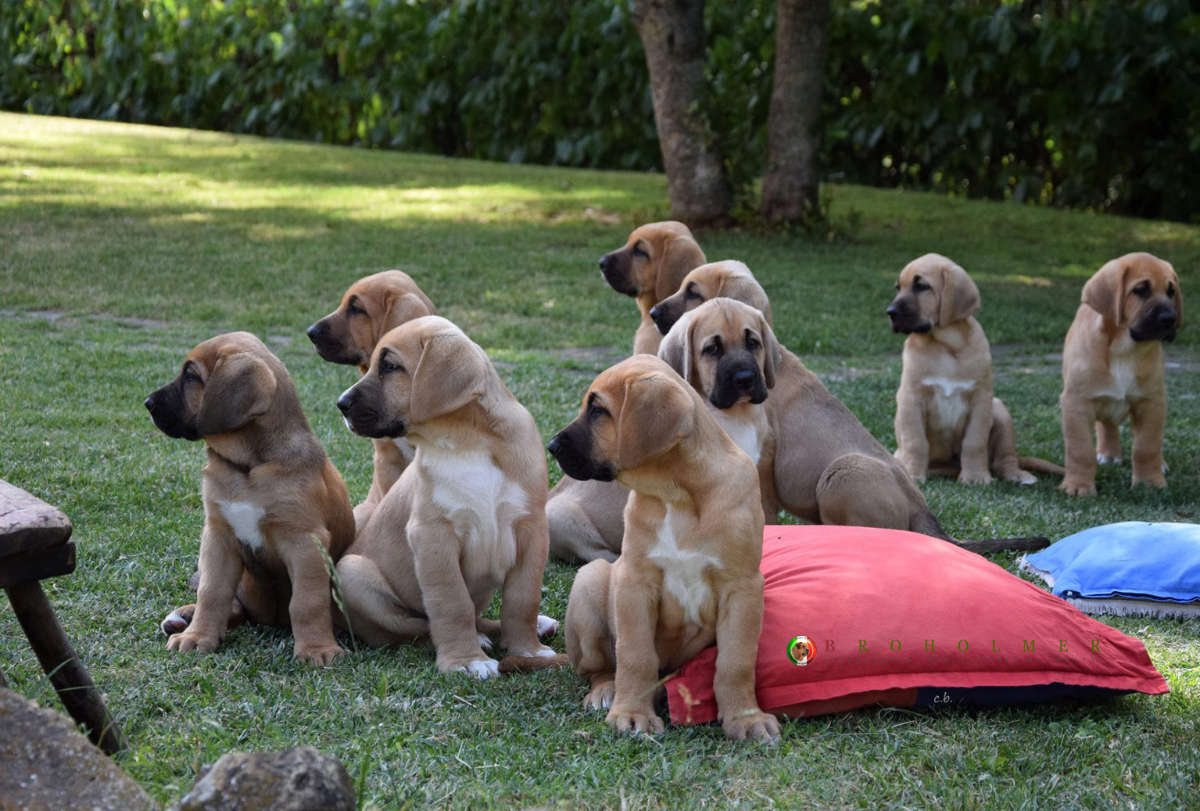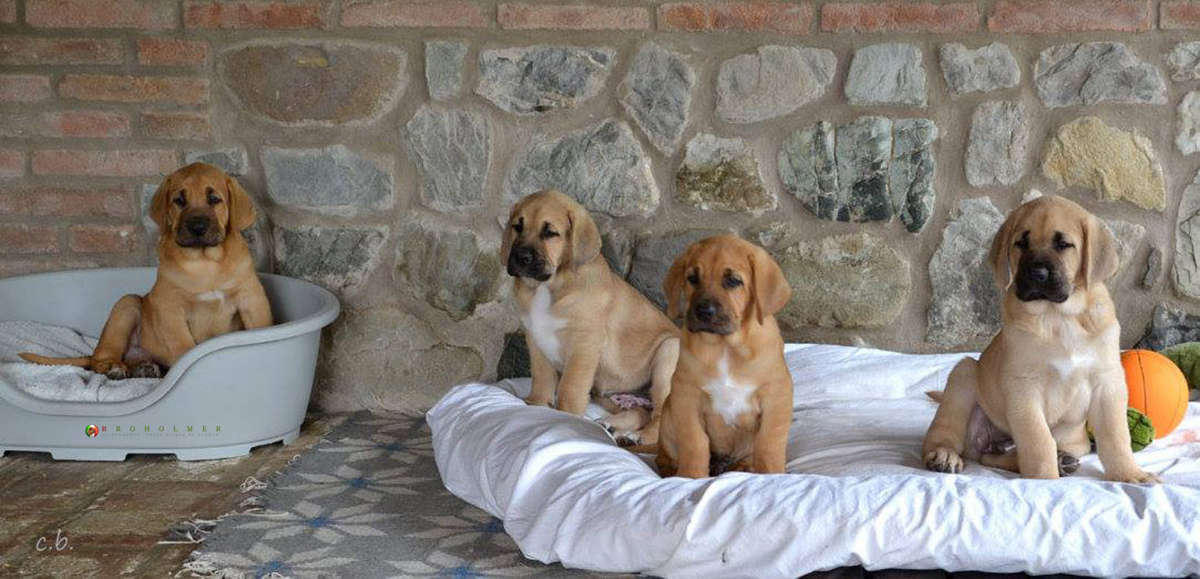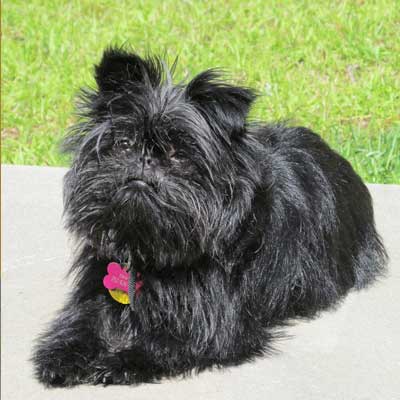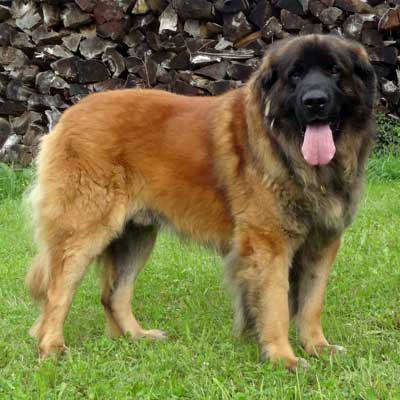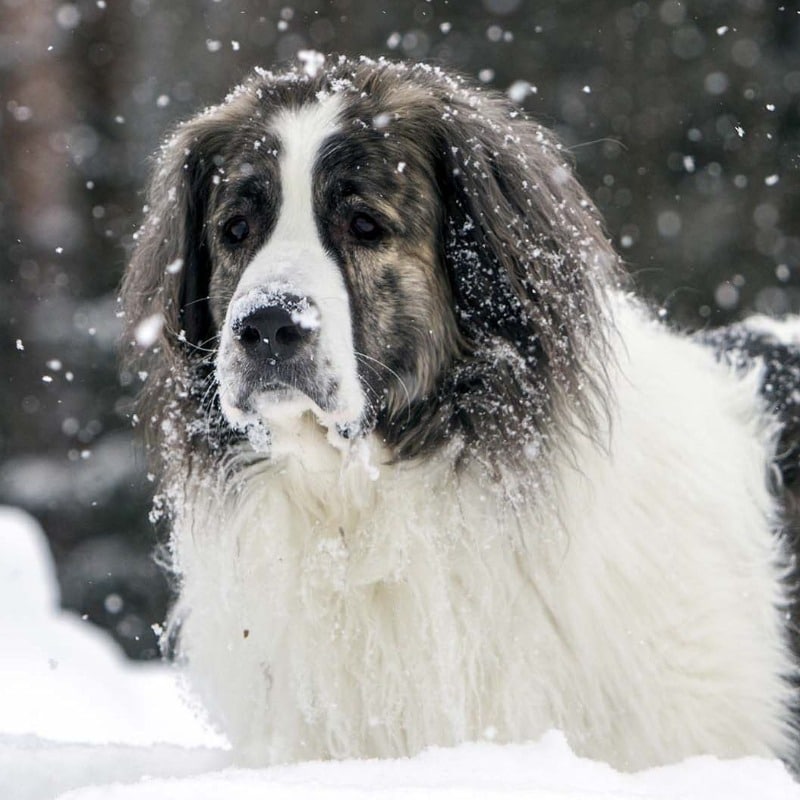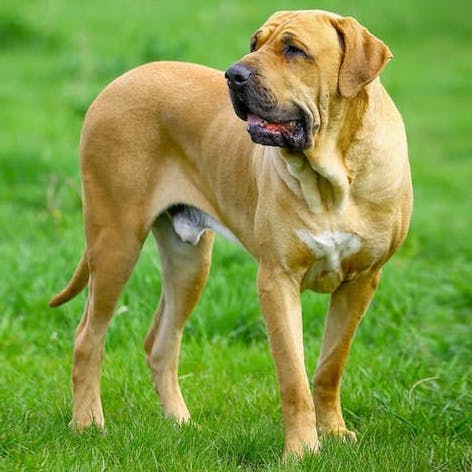Broholmer
Quite observer of what happens around him, Broholmer is a real family dog
-
Head
Rather big and wide, with a heavy appearance. -
Head - cranial region
Skull: Broad and rather flat. Topline of skull is parallel to topline of muzzle and set a little higher.
Stop: Not too pronounced. -
Head - facial region
Nose: Full and black.
Muzzle: Massive; looking rather short due to the heavy head. Upper and lower jaw are of equal length.
Lips: Pendulous, but not excessively so.
Jaws / Teeth: Powerful jaws with well developed muscles. Scissor or pincer bite.
Eyes: Round, not too big. Colour from light to dark amber.
Expression should show great self-confidence.
Ears: Medium sized, rather high set. Carried hanging close to cheeks.
-
Neck
Very powerful and muscular with some throatiness, yet not excessive -
Body
Topline: Straight.
Withers: Strong and clearly defined.
Back: Rather long.
Croup: Medium length, slightly sloping.
Chest: Powerful and deep, with well a developed forebreast. -
Tail
Set on rather low, broad at base. It is carried drooping and has no flag or feathering.
When moving the tail is raised to a horizontal position, preferably not higher. It should never be carried over the back or in a curl. -
Forequarters
General appearance: Strong, straight and powerful forelegs with muscular upper arms. The length and angulation of the bones should produce a free movement with good reach walking or trotting.
Upper arm: Very muscular.
Elbows: Moving close to the body.
Forearm: Straight and powerufl.
Pastern: Not too long.
Front feet: Rounded and close. -
Hindquarters
General appearance: Powerful and muscular hindlegs with angulation able to produce good driving power. Seen from behind the hindlegs are straight and parallel.
Upper thigh: Powerful and muscular.
Rear pastern: Not too long.
Hind feet: Tight, as the front feet. -
Gait / Movement
Composed and stooping. Natural gaits are walking and trotting. -
Skin
Well pigmented and thick; generally profuse, especially at the neck. -
Coat - hair
Short and close lying, with a thick undercoat -
Coat - colour
Yellow with black mask. Golden red. Black. White markings on chest, feet and tip of tail are optional. -
Size
Height at withers :
Male : ca 75 cm, weight 50 - 70 kg.
Bitch : ca 70 cm, weight 40 - 60 kg. -
Faults
Any departure from the foregoing points should be considered a fault and the seriousness with which the fault should be regarded should be in exact proportion to its degree and its effect upon the health and welfare of the dog.
• Insufficient in substance, forechest and depth of chest.
• Too light and elegant in head and body.
• Stop too marked; muzzle too light; corners of the mouth pendulous.
• Ears too big or too small. Rose ears.
• Tail set on too high or too low. Hook or kink tail.
• Long and weak in pasterns; splayed feet.
• Cowhocks.
• Movement too elegant.
• Fringes/flag on buttocks and tail. -
Disqualifying faults
• Aggressive or overly shy dogs.
• Any dog clearly showing physical of behavioural abnormalities.
• Nervous, sharp or aggressive.
• Squarely built, definitely insufficient in substance.
• Nose other than black.
• Overshot or undershot mouth.
• Eyes of different colour.
• Erect ears.
• Tail curled up.
• Coat: Colour faulty; long-haired.

